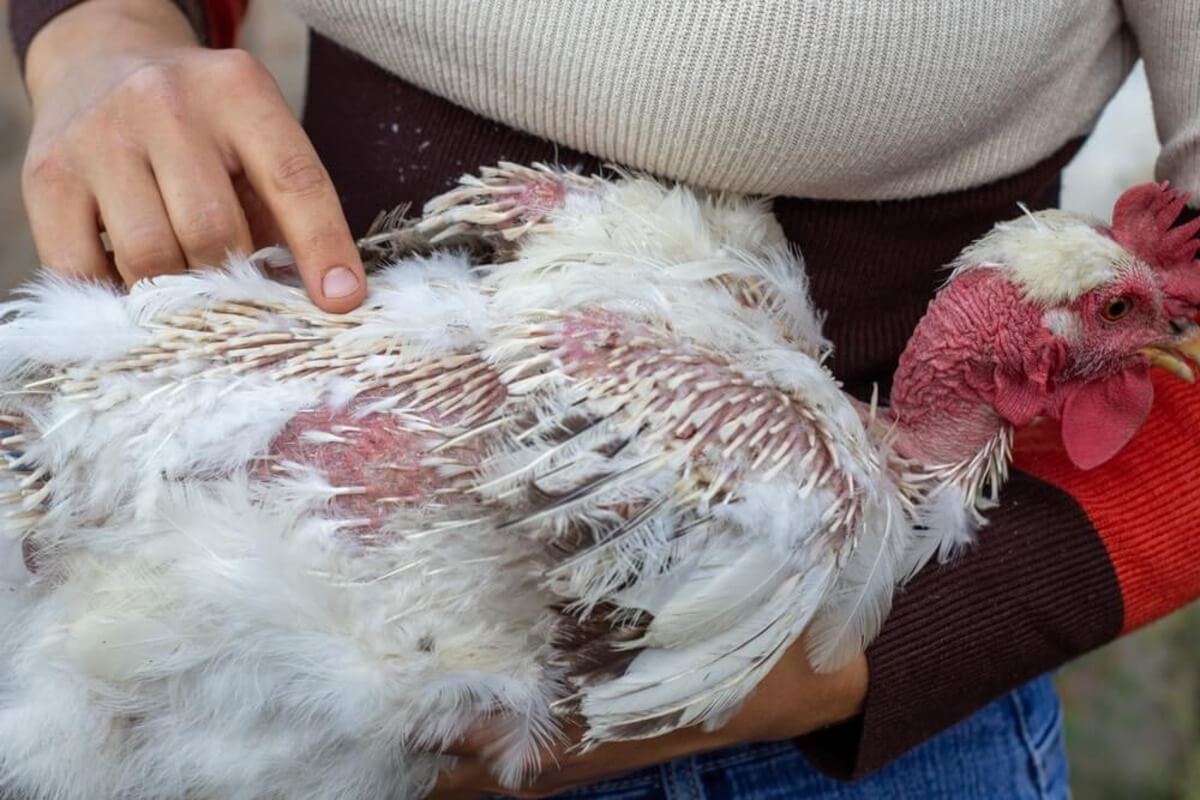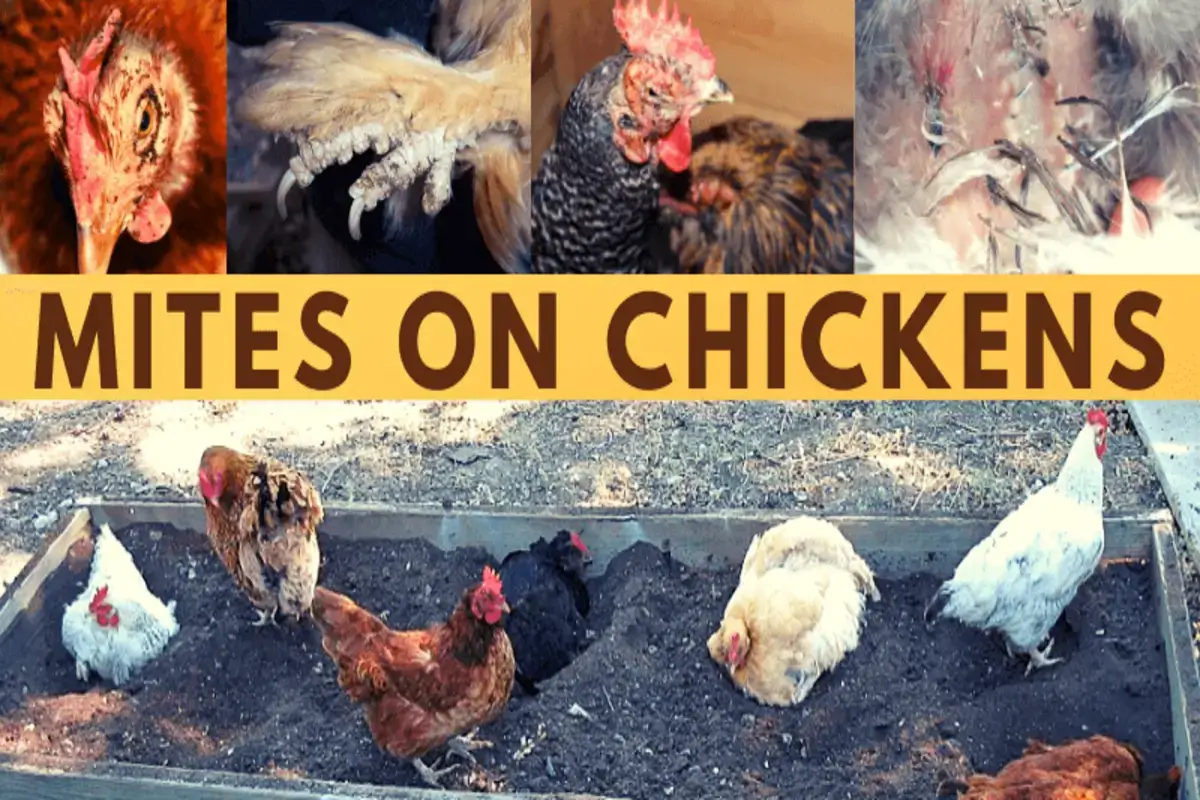Have you noticed one of the birds in your chicken coop walking around with a large, fluid-filled abdomen? This condition is known as water belly, and it’s sometimes a problem in older laying hens.
Although this disorder isn’t a disease or contagious to the rest of your birds, it does require urgent attention and is unfortunately fatal in the long run.
In this article, we’ll cover everything you need to know about water belly in chickens so that you’re fully equipped to recognize, prevent, and address this ailment.
From understanding its causes and symptoms to effective management measures, we’ll give you guidance on how to safeguard the health of your flock.
What Is Water Belly?
Water belly—or ascites as it’s scientifically known—is a build-up of fluid in the abdominal cavity. Although the liquid comes from the liver, this condition mainly occurs because of pulmonary hypertension syndrome.
When a chicken has pulmonary hypertension syndrome, its body can’t circulate oxygenated blood as quickly as it should. This causes the bird’s heart to try to compensate, putting extra stress on the liver which then begins to leak fluid into the abdomen.
Water belly usually occurs in fast-growing broiler chickens, but the condition can develop in egg-laying hens as well. While ascites isn’t infectious and can’t be passed along to other members of the flock, it has a high mortality rate and significantly impacts a bird’s quality of life.
For this reason, you should immediately address the condition should you spot it in any of your chickens.
Signs of Water Belly in Chickens
Water belly is characterized by a handful of symptoms, the most common one being a swollen and enlarged abdomen. If you poke the chicken’s belly, it feels soft and squishy, as if filled with liquid.
The skin along the abdomen also appears red, with the area likely missing most of its feathers. Your bird will waddle as it walks, causing a noticeably altered gait.
A bird that has ascites shows signs of fatigue and a slower growth rate because of the lack of oxygen. It will have lower energy levels, along with a reduced appetite, causing this hindered level of development.
Ascites causes birds to appear as if they are in respiratory distress, with their breathing visibly labored. A chicken with water belly will pant even when it isn’t hot, as it struggles to inhale properly due to the pressure the accumulated fluid exerts on its respiratory system.
Birds suffering from this ailment also have blue wattles and combs. Any oxygen available in the hen’s body is directed to more important organs, causing these less crucial appendages to change color.
Causes of Water Belly
While pulmonary hypertension syndrome is the most common cause of water belly in chickens, other factors may contribute to its development. Let’s take a closer look at them below:
Growth
Ascites occurs most frequently in chicken breeds that grow quickly. While these birds experience rapid development, their hearts and lungs can’t keep up with the oxygen demand of the tissues, putting a large amount of pressure on these vital organs.
As a result, the bird develops water belly, followed by heart failure.
Elevation
Regions at high altitudes don’t have as much oxygen available in the air. This means that birds living in chicken coops located in elevated regions have more stress on their hearts, as it’s harder for the organ to pump the vital gas through the body.
This potentially exacerbates the development of water belly.
Respiratory Disease
Respiratory diseases may also cause water belly in chickens, as they decrease the effectiveness of the lungs. This results in the bird’s body struggling to get enough oxygen.
A prolonged bout of respiratory illness could easily result in a case of ascites, so it’s important to always address any health issues your birds have promptly to minimize the risk of them developing a complication like water belly.
Other Possible Causes of Water Belly
Ascites may also be caused by:
- Age: Deterioration in a chicken’s health due to age could result in water belly.
- Environmental stress: Extreme temperatures, improper ventilation, and unsanitary conditions may put stress on the organs and lead to ascites.
- Nutrition: Eating too many fatty foods or high levels of protein increases your flock’s risk of obesity. Being overweight could lead to hypertension or heart failure, with water belly as a potential consequence.
- Mold: Diseases caused by mold, like brooder pneumonia, often lead to the development of ascites due to compromised respiratory function in the chicken.
Treatment for Water Belly
Unfortunately, water belly eventually results in the death of your bird no matter what treatment you give it, as the condition can’t be fully cured. You can drain the swollen area to make your chicken more comfortable, but the fluid will likely return and you’ll have to repeat the procedure.
A trusted veterinarian can perform the draining for you, but it’s also possible to do it yourself. It might be tough at first if you’re a little squeamish, but rest assured that it doesn’t hurt your bird.
To drain water belly, you’ll need:
- A 60 cc syringe
- An 18 gauge needle
- A bucket or bowl
- Gloves
- Rubbing alcohol
- Antibiotic spray
Before getting started, put on your gloves and place your bowl or bucket nearby to squirt the excess liquid into. Assemble your needle and syringe, ensuring all air is removed from the tube.
The first step is to gently pick your chicken up and hold it with its rear end—also called the vent—facing towards you. Secure the bird’s head and wings as much as possible so that it can’t flap around while you’re busy.
You should insert the needle on the right-hand side of the hen, around two inches away from the vent. It’s crucially important that you inject on the right side of your chicken, as its essential organs are located on its left side.
Once you know where you will insert the needle, sterilize the area with the rubbing alcohol and allow it to dry. Slowly inject and start to draw out the liquid, which should be pale yellow.
Should the fluid be black or green, your bird could have an infection. In this case, stop draining immediately and contact your veterinarian for advice.
Take your time and ensure not to draw out the liquid too quickly, as your chicken could go into shock. It’s recommended that you never drain more than one cup of fluid in one sitting, as the puncture wound will continue to drain over the next few days.
When your syringe is full, twist it off and leave the needle in your hen while emptying the tube before reattaching it. You should avoid inserting the needle more than once during draining.
Once the procedure is complete, apply some antibiotic spray to the puncture site and keep your bird away from the rest of its flock for a few days to allow it to recover. Remember to responsibly dispose of your needle in an appropriate sharps container.
If you perform the draining correctly, it should be around 2–3 months before you have to do it again.
How to Prevent Water Belly
Preventing water belly from developing in your hens is much better than having to treat the condition. Implementing some proactive measures can significantly reduce your flock’s risk of ascites.
Ensure that your coop is well-ventilated, as the build-up of gasses such as ammonia can increase the chances of your birds developing water belly. Excess amounts of dust in the enclosure also contribute to respiratory illnesses that stress a chicken’s organs.
You should always try to regulate the temperature inside your coop, as extreme heat or cold can also stress a bird’s system. Monitor the conditions in your birdhouse regularly to ensure they remain within a comfortable range for your hens:
Provide your chickens with a balanced, nutritious diet and ensure they get plenty of fresh air and exercise to promote overall health. Feed them a variety of grains, vegetables, and proteins and ensure they have access to a clean waterer at all times.
The Final Word on Water Belly in Chickens
Water belly in chickens is a serious condition that requires immediate attention. While there’s no cure for the disorder, it’s possible to make the bird more comfortable and improve its quality of life through supportive care.
Through an effective ascites management strategy, you can help your hens maintain their health, potentially extending their lifespans and minimizing the impact of the condition on their daily activities.
As with any disorder, prevention is better than cure, and taking some proactive measures can reduce the risk of your flock developing ascites. Promoting overall health is essential to ensure the long-term well-being of your birds.





